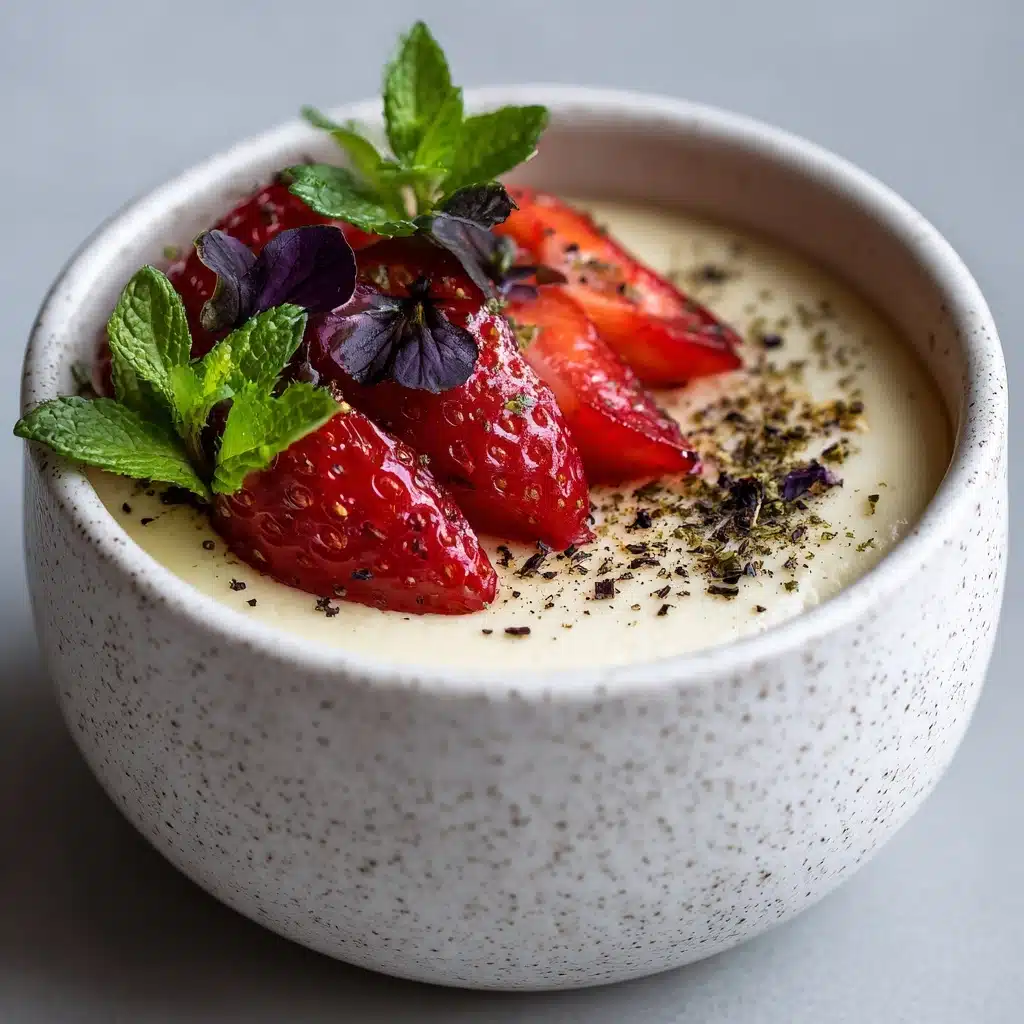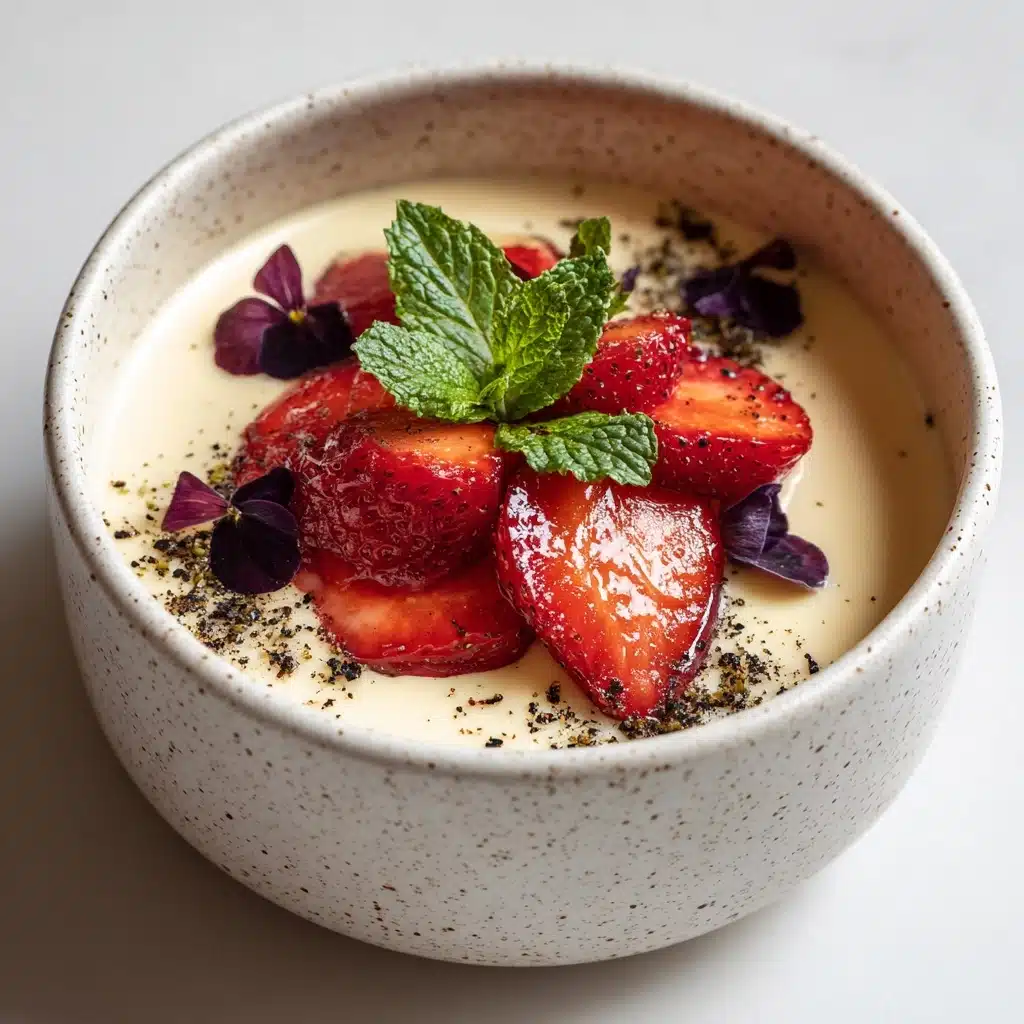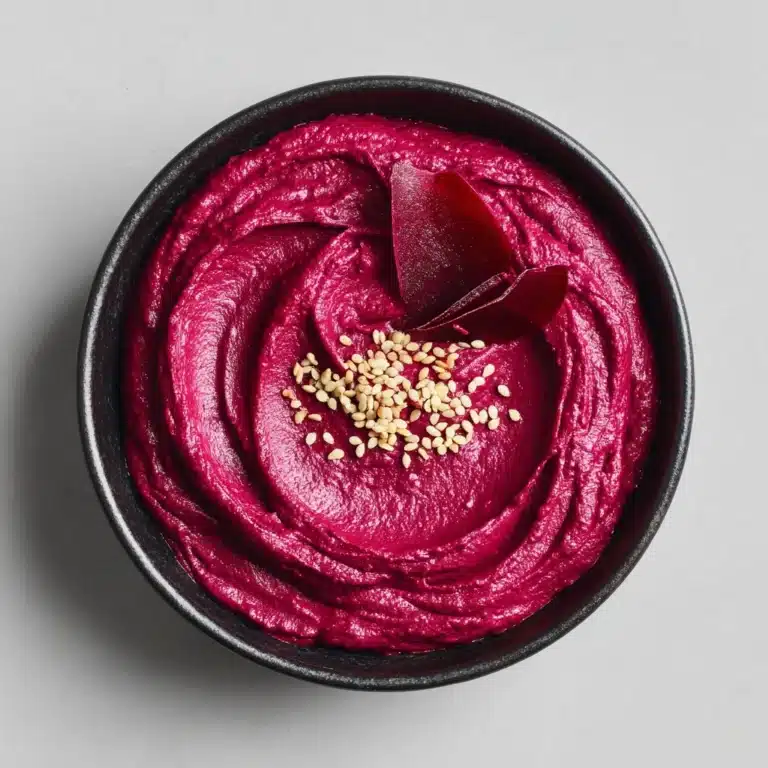If you’re searching for a showstopping dessert that’s elegant, delightful, and surprisingly easy, look no further than this Sabayon Recipe. A classic of French cuisine, sabayon is a luxurious custard that’s both frothy and velvety, whisked up from just a few everyday ingredients. Whether you’re planning a romantic dinner, a dinner party with friends, or a treat for yourself, this Sabayon Recipe always feels special, with its light texture and delicately boozy flavor—especially when you crown it with a tumble of fresh berries and a cloud of whipped cream. Trust me, once you taste a spoonful of warm, pillowy sabayon, you’ll want to keep this recipe in your back pocket for every occasion.
Ingredients You’ll Need
-
Egg Yolk Mixture:
- 4 large egg yolks
- 1/4 cup granulated sugar
Additional Ingredients:
- 1/2 cup dry white wine or Marsala wine
- Fresh berries or fruit for serving (optional)
- Whipped cream for topping (optional)
How to Make Sabayon Recipe
Step 1: Set Up Your Double Boiler
To start, fill a medium saucepan with about one inch of water and bring it to a gentle simmer over medium heat. This setup is crucial for making sabayon, as the indirect heat will keep your egg yolks smooth and prevent curdling. Place a heatproof bowl—metal or glass work best—on top, ensuring the bottom of the bowl doesn’t touch the water. This way, you’ll have perfect control over the cooking process.
Step 2: Whisk Yolks and Sugar
In your heatproof bowl (off the heat for now), add the egg yolks and granulated sugar. Now, with energy and enthusiasm, whisk them together until the mixture becomes pale, creamy, and slightly thickened. Don’t rush this step—the more you whisk, the fluffier and lighter your sabayon will be. Think of this as building the foundation for a truly memorable custard!
Step 3: Cook and Whisk in the Wine
Place your bowl over the simmering water and keep that whisk moving! Gradually pour in the wine as you whisk, making sure to add it slowly so the warmth doesn’t shock the eggs. Continue whisking constantly, for about 8 to 10 minutes, until the mixture turns thick, frothy, and nearly triples in volume. You’ll know your sabayon is perfect when the custard forms gentle, soft peaks and coats the back of a spoon.
Step 4: Serve Immediately
Once your Sabayon Recipe is beautifully thick and airy, remove it from the heat right away. Spoon it into individual glasses or bowls for an elegant presentation. Serve while still warm for the ultimate experience—sabayon’s unique texture shines brightest when freshly made. Top each serving with a scatter of fresh berries and a billow of whipped cream, if you like. Bon appétit!
How to Serve Sabayon Recipe

Garnishes
The classic touch is a handful of fresh berries—raspberries, strawberries, or blueberries all work wonders. A small dollop of lightly sweetened whipped cream takes things to a dreamy level. For extra flair, try a tiny dusting of grated chocolate or a few mint leaves to brighten the dish.
Side Dishes
While this Sabayon Recipe is a star all on its own, you can serve it alongside crisp biscotti, delicate French butter cookies, or blocks of buttery pound cake. The delicate custard acts as a gorgeous sauce, perfect for dipping or spooning over treats.
Creative Ways to Present
This dessert is as versatile as it is beautiful. Layer it in clear glasses with alternating bands of fruit and sabayon for an elegant parfait, spoon it over poached fruit for a stunning finish, or use as a sauce alongside tarts and pastry—sabayon transforms every plate into a celebration.
Make Ahead and Storage
Storing Leftovers
If you find yourself with any leftover Sabayon Recipe (it doesn’t happen often!), transfer it to an airtight container and refrigerate. Keep in mind that sabayon is best enjoyed warm and freshly made, but leftovers can last up to one day in the fridge.
Freezing
Sabayon doesn’t fare well in the freezer—the delicate, airy structure collapses and the texture suffers. It’s best to make just what you’ll eat and savor it in the moment.
Reheating
To gently rewarm refrigerated sabayon, set the container into a bowl of warm water and stir it softly until just heated through. Avoid direct heat or microwaving, which can cause the custard to separate or scramble.
FAQs
What is the difference between sabayon and zabaglione?
Both sabayon and zabaglione are creamy, wine-based custards, but sabayon traditionally comes from France, while zabaglione is its Italian cousin. The main difference is the wine used—zabaglione typically features sweeter wines like Marsala, while sabayon sometimes opts for dry white wines for a lighter flavor profile. This Sabayon Recipe works beautifully with either style!
Can I make a non-alcoholic version of this Sabayon Recipe?
Absolutely! If you want to skip the wine, substitute with fruit juice such as white grape or apple juice, or use sparkling cider. The texture and froth will remain divine, and you’ll get a sweet, perfumed custard perfect for all ages.
Why is my sabayon not thickening?
If your sabayon remains too thin, it’s usually because the mixture hasn’t been whisked long enough over the heat. Keep whisking—sabayon should become thick, airy, and form soft peaks. Also, make sure the water stays at a simmer and never touches the bottom of the bowl.
Can I use an electric mixer for sabayon?
You can use a hand mixer on low speed if continuous whisking by hand feels daunting. Just be mindful not to over-whip, as the sabayon is delicate and should stay perfectly smooth and creamy.
What’s the best wine for this Sabayon Recipe?
Both dry white wines and Marsala are traditional and delicious options. Choose Marsala for a richer, slightly caramel flavor, or go for a crisp dry white (like Sauvignon Blanc) to keep things light and zesty. Whatever you pick, use a wine you enjoy drinking—its character shines through in the finished dessert!
Final Thoughts
If you’ve never tried making a Sabayon Recipe at home, now’s your perfect moment! This incredible French dessert is a joy to whip up and an absolute treat to eat. With just a few ingredients and a little whisking, you’ll create a dessert that wows every guest, every time. Don’t wait—gather your eggs and wine, and let this magical custard become your new favorite indulgence!
Print
Sabayon Recipe
- Prep Time: 5 minutes
- Cook Time: 10 minutes
- Total Time: 15 minutes
- Yield: 4 servings
- Category: Dessert
- Method: Double Boiler
- Cuisine: French
- Diet: Gluten-Free, Vegetarian
Description
Learn how to make a delightful Sabayon, a classic French dessert known for its light and airy texture. This egg yolk custard, enriched with wine, is perfect for topping fresh berries or as a sauce over cakes and pastries.
Ingredients
Egg Yolk Mixture:
- 4 large egg yolks
- 1/4 cup granulated sugar
Additional Ingredients:
- 1/2 cup dry white wine or Marsala wine
- Fresh berries or fruit for serving (optional)
- Whipped cream for topping (optional)
Instructions
- Prepare Double Boiler: Fill a medium saucepan with about 1 inch of water and bring to a simmer.
- Mix Egg Yolk and Sugar: Whisk egg yolks and sugar in a heatproof bowl until pale and slightly thickened.
- Add Wine: Slowly pour wine into the egg mixture while whisking constantly.
- Cook Sabayon: Place the bowl over simmering water, whisk vigorously for 8-10 minutes until thickened.
- Serve: Remove from heat when the sabayon forms soft peaks, and serve in glasses or bowls. Top with berries or whipped cream if desired.
Notes
- Sabayon is best enjoyed warm and freshly made.
- For a non-alcoholic version, replace wine with fruit juice or sparkling cider.
- Great as a topping for cakes, fruits, or pastries.









